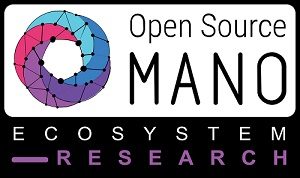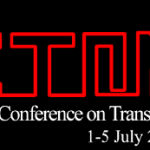
- This event has passed.
22nd Conference on Optical Network Design and Modelling (ONDM) 2018

14th (Mon) May:
Massimo Tornatore from Politecnico di Milano (Polimi), Italy will have a tutorial [9:15 – 10:15]:
- Title: “An Introduction to Machine Learning in Optical Transport networks”
- Abstract: This tutorial provides introductory concepts of Machine Learning (ML) and an overview of its main applications in optical networks. Then our experience in developing some specific applications, as QoT estimation and soft-failure identification, is described in more detail.
An invited paper by Shuangyi Yan, Reza Nejabati and Dimitra Simeonidou from University of Bristol in a session: TS1: Machine Learning techniques in optical networks [10:35- 12:35].
- Title: “Data-driven Network Analytics and Network Optimisation in SDN-based Programmable Optical Networks”
- Abstract: 5G, IoT and other emerging network applications drive the future optical network to be more flexible and dynamic. Fully awareness of current network status is critical for better network programming in short timescale. In this paper, the centralized network database with network monitoring data and network configuration information enables network analytics application to support the future dynamic and programmable optical network.
In TS3: Resilience and security session, an invited paper by Behnam Shariati, Alba Vela, Marc Ruiz and Luis Velasco from Universitat Politecnica de Catalunya (UPC);
- Title: “Monitoring and Data Analytics: Analyzing the Optical Spectrum for Soft-Failure Detection and Identification”
- Abstract: Failure detection is essential in optical networks as a result of the huge amount of traffic that optical connections support. Additionally, the cause of failure needs to be identified so failed resources can be excluded from the computation of restoration paths. In the case of soft-failures, their prompt detection, identification, and localization make that recovery can be triggered before excessive errors in optical connections translate into errors on the supported services or even become disrupted. Therefore, Monitoring and Data Analysics (MDA) become of paramount importance in the case of soft-failures. In this paper, we review a MDA architecture that reduces remarkably localization. In addition, we rely on Optical Spectrum Analyzers (OSA) deployed in the optical nodes as monitoring devices acquiring the optical spectrum of outgoing links. Analyzing the optical spectrum of optical connections, specific soft-failures that affect the shape of spectrum can be detected. A workflow consisting of machine learning algorithms, designed to be analyze the optical spectrum of a given optical connection acquired in a node and to determine whether a filter failure is affecting it, and in such case, what is the type of filter failure and its magnitude. Exhaustive results are presented allowing to evaluate the proposed method.
16th (Wed) May:
Andrew Lord, Optical network research leader, BT, UK and Metro-Haul project leader will provide the key-note speech.
- Title: “The Evolution of Optical Networks in a 5G world”
- Abstract: This talk will describe the impact of 5G on optical networks. Use Cases will be drawn from a wide range of current activities underway within BT, including both our internal 5G-optical joint research and also the EU-funded work within the Metro-Haul project, being led by BT. The scope will address the control layer, drawing from BT’s multiple developing requirements for SDN, including dynamic E2E video networks, fast scheduling of high bandwidth pipes and provision of optical resources for 5G network slices. Regarding the physical layer, future techno-economic requirements for optical transport in the metro network will be discussed.



